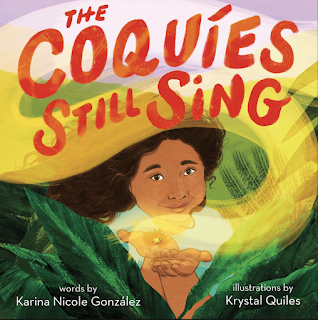When I was four, we moved from my native Peru to my mother’s homeland in the United States. I remember jumping to reach the elevator buttons to get to the 14th floor and never reaching past 4, missing our massive three-bedroom condo in the clouds, with sky high ceilings and racks that required tiptoes to reach the hooded towel I always wore like a superhero cape. This was the image I carried with me for nine years until I returned for my first visit at the age of 13.
Walking through the halls after so much time I was shocked to discover I could easily reach the elevator button for the 14th floor, and it no longer felt like an Olympic sprint to go from one part of the house to the other. Beyond that, the ceilings were kind of low, and I had to look down on the racks that now sported regular towels with no hoods.
What had changed beyond time? About three feet of height and an adolescent’s worldview. While the setting was the same, my sense of place was completely different. When writing remember that a setting is constant, but sense of place, how our characters move within a setting is variable.
To put this idea into practice, think of a forest, any forest. Now think about how a bird might view it. How about an urban child visiting the snow for the first time? A ski lift operator waiting to go on a hot date? A helicopter pilot out on an emergency rescue? What sensory details would they focus on? How would their needs or desires affect how they react and move within this particular setting?
How old is your character?
· Impact of character’s age and what they’re allowed to do.
o Can they walk to school on their own?
o Can they help with particular chores?
· Impact of height on what they notice.
o How does this affect what they notice at eye-level?
· Repertoire of memories in regards to setting?
o What memories/associations has your character developed around this particular setting?
What is your character’s cultural background?
· How does their cultural heritage influence what they give importance to?
· How does their culture impact how they interact with their environment and those within it?
· What specific sensory details can help evoke a connection to their culture?
· How can you use contrasting elements about a character's sense of place to enhance a reader's emotional connection to a story?
What sensory details specific to a setting heighten a character’s sense of place?
· Is there a specific sound, scent, taste, texture or sight in the setting that is important to your character that you can use as a touchpoint or golden thread throughout your story?
· How do the seasons/passage of time affect these details?
· What descriptions or metaphors of these sensory details can you use to enhance the setting/sense of place in your story?
What's your character’s worldview?
- How do the personal challenges a character faces influence what they notice about their world?
- How can you use specific descriptions to enhance a sense of place in your stories?
- How does the sense of place differ amongst the characters in your story?
- How can you play off of those differences to heighten tension and add emotional resonance in your story?
What time of year does your story take place?
- How can you play with seasonality to build a story around a particular time of year?
- What sound devices can you add to bring your story to life?
· How does the time of year affect the sensory details and activities that take place in your story?
What language(s) does your character speak?
· How can you use language to give clues about a neighborhood or community with well-placed slang, songs, or words from other languages spoken by your characters?
· How can you use language to bring the setting to life with the sounds and phrases one would hear there?
· How can you use language to give a sense of the culture and people that inhabit/shape a setting?
A sense of place in action
To illustrate sense of place in action, let’s look at some stories by the PB Sunrays:
In the book, Plátanos are Love, author Alyssa Reynoso-Morris deftly plays with her characters’ ages to establish a sense of place and burgeoning sense of belonging and identity while Esme and her abuela shop for bananas at the market. Lines such as “On my tippy-toes, I reach for the plátanos at the top of the pile,” deftly reveal the character’s age through a well-placed reference to height. This coupled with the Abuela’s repertoire of memories, “Recipes were passed down in secreto because our ancestors weren’t allowed to leer, escribir o dibujar like you do in your notebook,” helps to create a sense of continuity and connection with the past, which imbues the humble banana with personal history and meaning as the book progresses. Artist Mariyah Rahman emphasizes this connection by playing with her color palette making Esme’s present bright and vibrant and Abuela’s memory sepia-toned and nostalgic. This pairing of words and art take us beyond the settings of the market and kitchen and work together to lovingly reveal Esme’s growing world view and her place within it.
In Diwali in my New Home by Shachi Kaushik, a young Priya mourns the loss of her beloved Diwali festivities after recently relocating to a new city 9,000 miles away from India. As Priya travels throughout her day, she contrasts her quiet present with the colorful and vibrant memories of past Diwali celebrations. Illustrator Aishwarya Tandon further enhances this sense of loss in a new home by contrasting memory scenes that explode with color and connection, with more muted present ones that heighten how alone and disconnected Priya feels in her new surroundings. Kaushik works to merge these two worlds through well-placed sensory details, “When Priya returns home this afternoon, the scents of cardamom and warm ghee greet her. The sweet aromas wrap around Priya like a hug. ‘It smells like Diwali.’” Later in the story, a neighbor sees the family hanging Diwali lights and asks if they’re preparing for Christmas, a specific cultural reference that showcases contrasting worldviews between Priya’s new and old home.
Author Karina Nicole González artfully builds a sense of place in The Coquíes Still Sing: A Story of Home, Hope and Rebuilding, by rooting in the familiar scenes of her family garden. At sunup, she climbs the roof of her home and is tall as her Abuela’s mango tree, and “when night falls, a song fills the air CO-QUÍ, CO-QUÍ, CO-QUÍ.” Such specific details give us both a sense of her family story and their connection to the land, as well as the rhythm to Elena’s days. When a hurricane hits the island, the absence of both the mangoes and the nightly coqui lullabies poignantly illustrate the damage and loss left in the storms wake. As they rebuild, the refrain “Co-quí, co-quí, oh how I love thee,” paints a picture of hope and possibility as the days progress with each page turn. Artist Krystal Quiles plays with perspectives throughout the story to show Elena in the context of her environment, from a small girl peering through a rain-whipped house to Elena in her dog surrounded by the immensity of destruction, to warm-close ups of Elena receiving seeds to plant from Don Rafael. Quiles bookends the story with illustrations that echo each other and showcase the resilience of the island of its people and the coquíes so lovingly referenced throughout the book.
Focusing on developing a sense of place rather than just providing a setting enhances your readers connection to your story. The next time you write, ask yourself how your character’s life experience and world view impacts how they notice and interact with their setting and use that to make informed choices about what to include in your writing.
Sara A. Fajardo first discovered the power of words when she was four. Newly arrived in the United States from her native Peru, her English vocabulary consisted of the word “monkey,” which she promptly turned into her favorite greeting, “Hola Monkey!” The amused reaction to that phrase started her on a lifelong path of telling stories—first as a photojournalist, then as a multimedia storyteller for humanitarian aid organizations, and now as a writer for children. She grew up in the agricultural community of Salinas, California, and has lived in Finland, Japan, and Kenya. Sara currently resides in the San Francisco Bay Area, with her husband, two children, and very playful cat.
Her book Paka Paka con la Papa: Alberto Salas and the Hide and Seek Potatoes, illustrated by Juana Martínez Neal comes out in 2024. Connect with her on Twitter.






4 comments:
Thank you, Sara! I write adult novels, but even so, this is such a great set of questions to reflect on.
Your message in this post is helpful.
Such a great list of useful suggestions for enhancing our stories as writers, and a great list of books to read! Thank you!
LOVE LOVE LOVE this blog post. Insightful. Brief. I will definitely ask myself these questions moving forward. WELL DONE!
Post a Comment